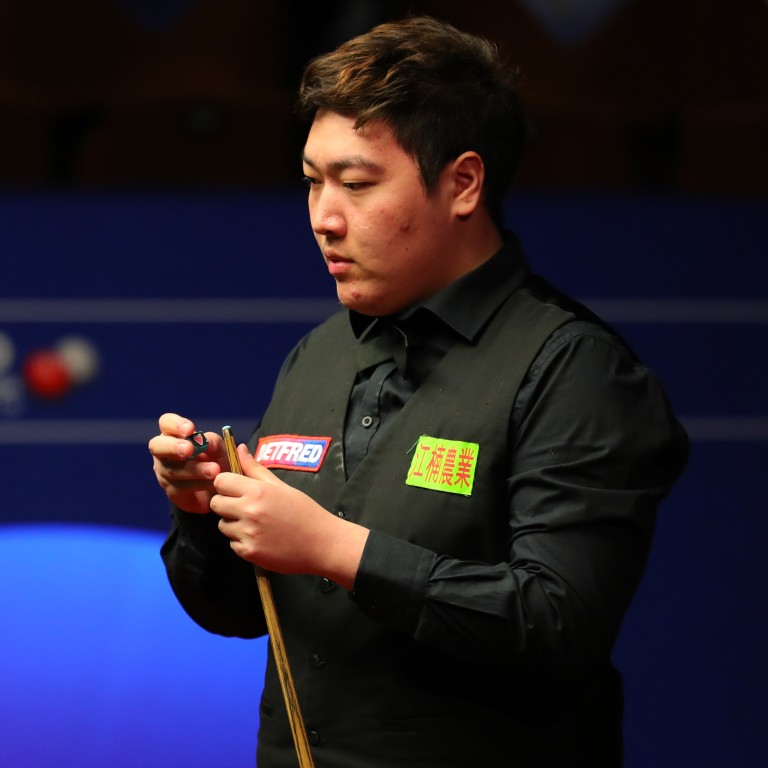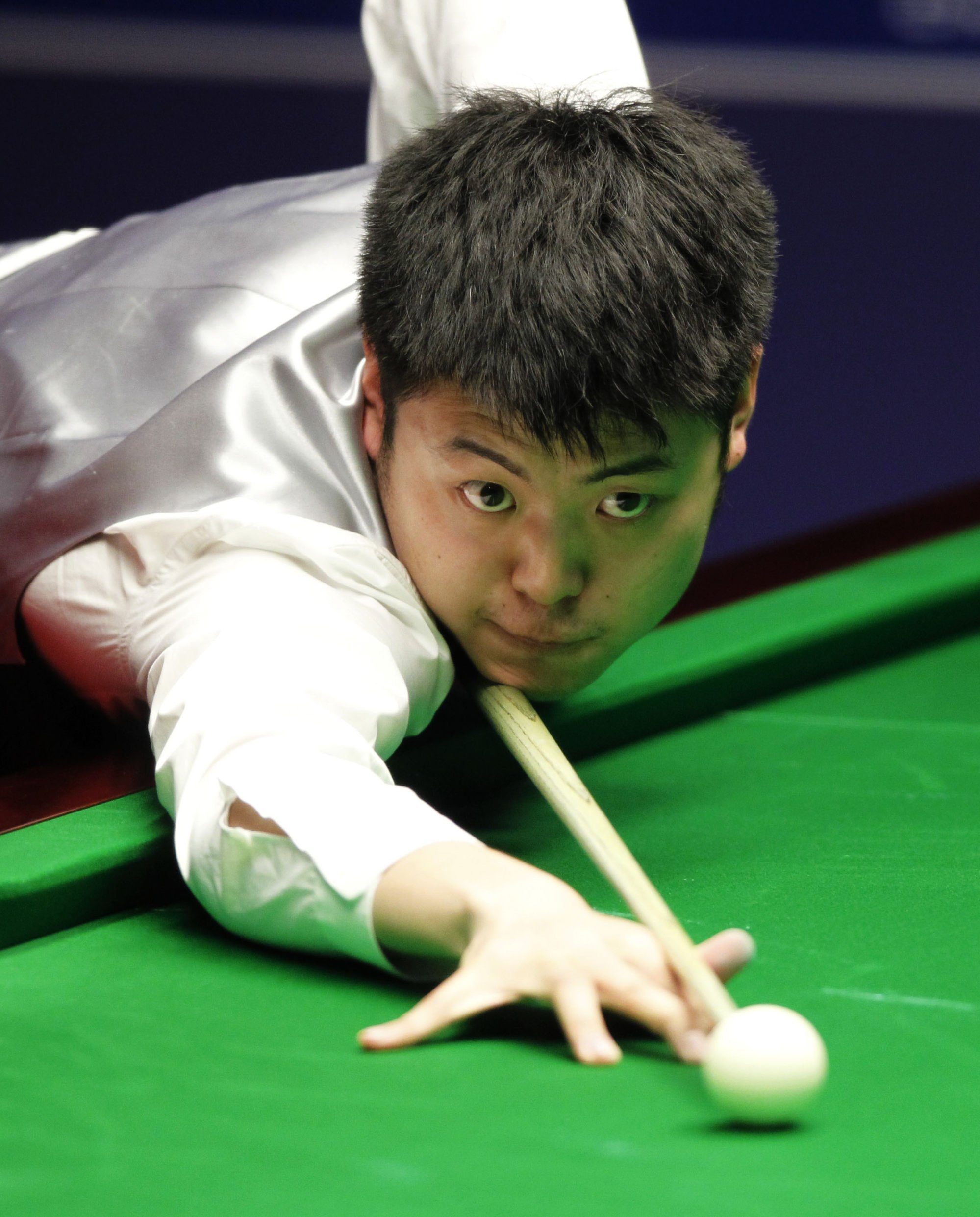
Explainer | Match fixing in snooker: how it works, why gamblers exploit the sport and who detects it
- 10 Chinese players were banned for fixing and betting offences in the latest case to hit snooker, but what makes the sport a corruption risk?
- Experts drawn from betting, law enforcement, military intelligence and financial fraud are on the fixers’ trail, armed with tech crunching huge amounts of data
It highlighted how fixing can be uncovered, but also snooker’s susceptibility, with its governing body’s integrity partner telling the Post of “an ever-present risk” from malign actors who are “not standing still”.
What happened to the Chinese snooker players?
Sportradar, which uses technology and human expertise to monitor betting and detect suspicious activity, helped the World Professional Billiards and Snooker Association (WPBSA) to investigate the Chinese players.
Tom Mace, who leads the company’s match-fixing monitoring and detection team, confirmed it reported matches under its agreement with the WPBSA.
“Past cases show there’s been an ever-present risk,” Mace said. “Those can act as a warning to players, but it doesn’t last. Snooker has traits that make it vulnerable.”

Seven players had been banned for fixing before the latest case, stretching back to Stephen Lee, the first, whose 12-year ban from 2012 was the longest until this week’s life bans for Liang Wenbo and Li Hang.
Liang, Li and eight other players had been suspended between October and January and charged with breaches of snooker regulations, then answered those – excluding Liang, who snubbed the proceedings – before an independent panel from April 24 to 26. Zhao Xintong attended in person in London, and the rest remotely from China. Zhao, Li and Yan Bingtao had legal representation.
How does snooker match fixing work?
Among snooker’s vulnerable traits is being an individual sport, making it easier to manipulate than one with multiple actors. Snooker has less fluidity and unpredictability than sports in which opposing players act simultaneously.
Leo Fernandez in 2016 admitted committing the first foul of a match to allow others to win bets, earning a 15-month ban. Lee, before that, had been found guilty of fixing first-frame and match outcomes, and exact scores. His tribunal found he targeted matches he felt he would lose, or could win despite dropping the first frame.
A second element is snooker’s appeal in regions where betting is popular.
Three groups were traced to Lee, the WPBSA found: Lee’s then sponsor and their associates opened multiple betting accounts to place bets; another group coordinated by his then manager placed almost identical bets; and a person known to Lee placed the same bets again. Half the winnings of one bet were paid into Lee’s wife’s bank account.
Modest earnings tempt some into fixing. “The top 10 players are comfortable, but further down, it’s hard to make a good living,” Mace said. “The WPBSA’s minimum £20,000 salary [for the tour’s 130 players] is a good initiative, but still not a lot to live on.”
Which snooker players were banned for match fixing, and for how long?
Hardship was cited repeatedly in the verdict on the 10 Chinese players, and alluded to at Lee’s tribunal. Lee, ranked as high as No 8 when he was suspended, had slipped out of the top 16 at the time of his offences. He will be 50 when his ban ends.
His verdict stated: “Mr Lee did not strike me as a cynical cheat but rather as a weak man who, under financial pressure, succumbed to the temptation.”
How is match fixing detected?
When there is corrupt activity, betting monitoring by the likes of Sportradar can raise the alarm. Its technology processes huge amounts of betting data and triggers alerts that its betting experts can analyse.
“That’s particularly true where betting – for instance for the Chinese players – occurred in Asian markets that are not regulated very robustly,” Mace said.

Sportradar also has an investigations unit staffed by experts with backgrounds in military intelligence, law enforcement, journalism and financial fraud. The WPBSA, too, has its own integrity unit. Customer data can identify punters who are mapped to players; where it cannot, suspicious betting can still build up a picture.
In 2018, the case against China’s Cao Yupeng included 38 betting accounts being used to place £250,000 (about US$300,000) in one second on one of his matches, with a potential £1 million profit. The Asian bookmaker’s software blocked it.
Finding exactly how fixing was arranged helps detection teams to tweak their systems.
“Match fixers are not standing still,” Mace said. “They’re aware of us. We’ve even seen they refer to us. They’re looking at ways they can avoid detection.”
Can sport stop match fixing?
Sportradar’s partnership with the WPBSA ranges from investigation to education – “a really effective model” others could copy, Mace said. Education entails bet-monitoring workshops and tutorials to raise awareness.
“The WPBSA has a very consistent track record – as soon as they’re aware of it, there’s zero tolerance,” Mace said. “They’re a fantastic example. They invest, and have staff who understand how to investigate and build a case.
“I think there are still some sports that are afraid to launch a case because it might be bad publicity. It’s about appreciating the risks and not being afraid to tackle it.”

